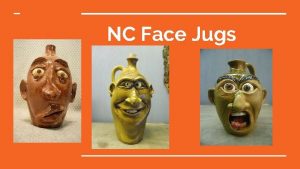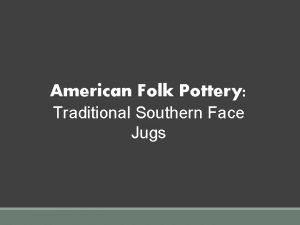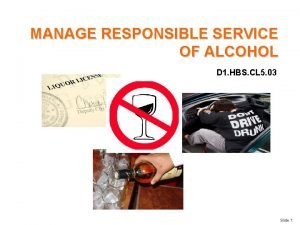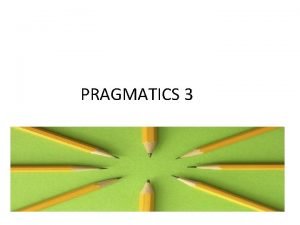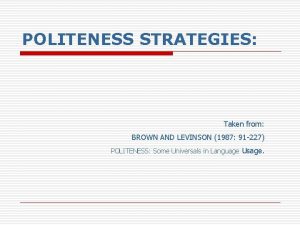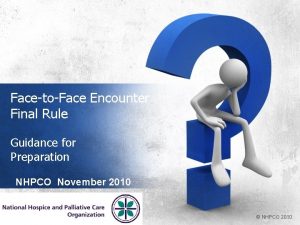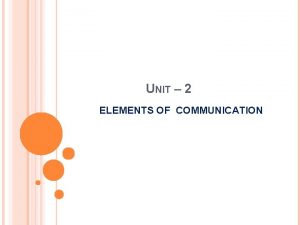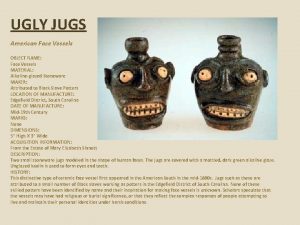Face Jugs A Southern Folk Art Tradition History







- Slides: 7

Face Jugs A Southern Folk Art Tradition

History • Face jugs can be dated back to the 1840 s • Known as “ugly” or “grotesque” jugs • Thought to have begun in Edgefield county South Carolina • Made by African slaves who worked as potters 1. Put by gravesites as an offering 2. To distinguish different liquids from one another • Mid-late 20 th century, two potters brought the Southern folk pottery of face jugs back • Burlon Craig • Lanier Meaders

Burlon Craig • Lived in Vale, North Carolina • Credited for keeping the tradition of face jugs alive • Used traditional alkaline glaze in his work • Potters in the Catawba Valley region (Lincoln and Catawba counties) of North Carolina formulated an alkaline glaze type for use on their stoneware pottery. This glaze was compose of clay and wood ash, as well as one of two additional silica sources: iron slag, or glass. Two-sided face jug, circa 1983

Lanier Meaders • Born in Cleveland, Georgia • Made ceramic churns, milk pitchers, food storage jars, and other functional vessels • His face jugs are what he is known for • His face jugs went through an evolution • Started out as blobs for the features • Evolved into more detailed and realistic features • Sold for as much as $3, 000 a jug!

Face Mugs -Requirements • • • Functional 1 -2 facial expressions 1 -2 handles (pulled or coiled) Facial features are realistic Slab built Dimensions: 5”- 8” in height Sketchbook Requirements: • • 2 different ideas = 2 mugs with different facial expressions Dimensions Process/plan written out Colored (no more than 3 colors)

Realistic Features • Not cartoon eyes • Study facial expressions • Include wrinkles and skin folds • Think about proportions

